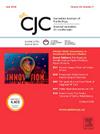体外膜氧合治疗电风暴或难治性室性心律失常患者:管理和结果。
IF 5.8
2区 医学
Q1 CARDIAC & CARDIOVASCULAR SYSTEMS
引用次数: 0
摘要
静脉-动脉体外膜氧合(VA-ECMO)患者由于心肌灌注、血流动力学紊乱和儿茶酚胺状态升高而具有室性心律失常的高风险。关于电风暴或难治性室性心动过速/纤颤(VT/VF)患者经VA-ECMO治疗的管理和结果的现有数据主要来自回顾性观察性研究。典型生存率在40-50%之间,其中15-20%的患者接受房室消融术,30-40%的患者需要晚期心力衰竭治疗(心脏移植或耐用左心室辅助装置)。同样,在VA-ECMO患者中,关于VT/VF管理的公开数据也很缺乏,因为它主要是从电风暴患者中推断出来的。虽然许多治疗原则(确定可逆原因,抗心律失常药物,VT消融和肾上腺素能张力降低)是可翻译的,但在VA-ECMO患者群体中处理VT/VF时需要特别考虑几个方面。在精心挑选的VA-ECMO患者中,接受VT消融的复发率约为30%,其中相当大比例(30-40%)需要晚期心力衰竭治疗作为退出策略。此外,对于接受VT消融的VA-ECMO患者,还需要考虑一些具体问题,如血管通路、ECMO通路部位并发症和全身抗凝所致出血。在这一患者群体中,VT/VF的最佳管理需要电生理学、心力衰竭和重症监护专家之间不断的重新评估和对话。需要进一步的研究,以便更好地为这一高危患者群体的护理提供信息。本文章由计算机程序翻译,如有差异,请以英文原文为准。
Extracorporeal Membrane Oxygenation for Patients With Electrical Storm or Refractory Ventricular Arrhythmias: Management and Outcomes
Patients on venoarterial extracorporeal membrane oxygenation (VA-ECMO) are at high risk for ventricular arrhythmias due to derangements in myocardial perfusion, hemodynamics, and heightened catecholamine states. Existing data on the management and outcomes of patients with electrical storm or refractory ventricular tachycardia/fibrillation (VT/VF) treated with VA-ECMO are primarily derived from retrospective observational studies. Typical survival rates are in the range of 40%-50%, with 15%-20% of patients undergoing VT ablation and 30%-40% of patients requiring advanced heart failure therapies (cardiac transplant or durable left ventricular assist device). Similarly, there is a paucity of published data on VT/VF management for patients while on VA-ECMO, as these data are largely extrapolated from patients with electrical storm. Although many of the treatment principles (identifying reversible causes, antiarrhythmic drugs, VT ablation, and reduction of adrenergic tone) are translatable, several aspects require special consideration when managing VT/VF in the VA-ECMO patient population. Among carefully selected patients on VA-ECMO who underwent VT ablation, reported recurrence rates were ∼ 30% and a sizeable proportion of them (30%-40%) required advanced heart failure therapy as an exit strategy. In addition, there are specific issues that require consideration for patients on VA-ECMO who undergo VT ablation, such as vascular access, ECMO access site complications, and bleeding due to systemic anticoagulation. Optimal management of VT/VF in this patient population requires ongoing reassessment and dialogue among electrophysiology, heart failure, and critical care specialists. Additional research is needed to better inform the care of this very high-risk patient population.
求助全文
通过发布文献求助,成功后即可免费获取论文全文。
去求助
来源期刊

Canadian Journal of Cardiology
医学-心血管系统
CiteScore
9.20
自引率
8.10%
发文量
546
审稿时长
32 days
期刊介绍:
The Canadian Journal of Cardiology (CJC) is the official journal of the Canadian Cardiovascular Society (CCS). The CJC is a vehicle for the international dissemination of new knowledge in cardiology and cardiovascular science, particularly serving as the major venue for Canadian cardiovascular medicine.
 求助内容:
求助内容: 应助结果提醒方式:
应助结果提醒方式:


